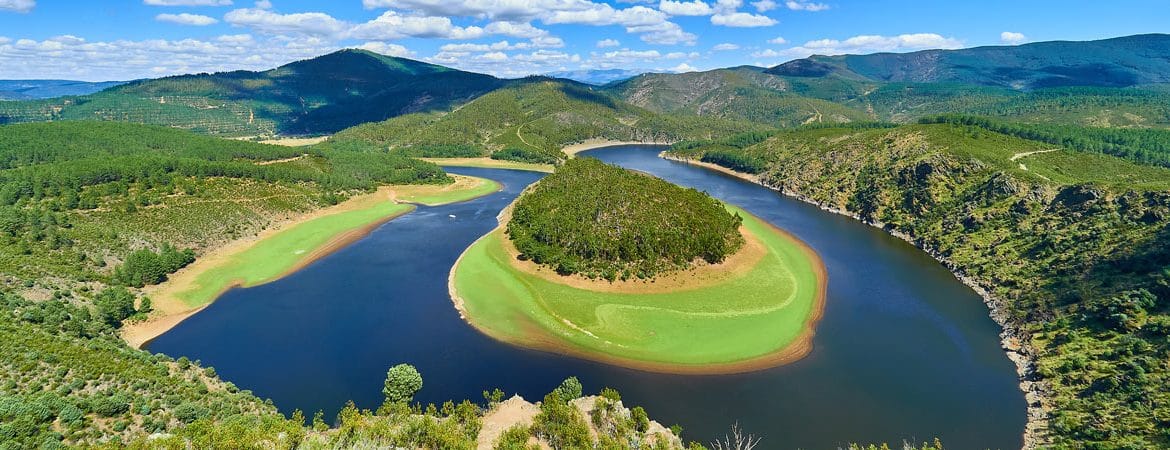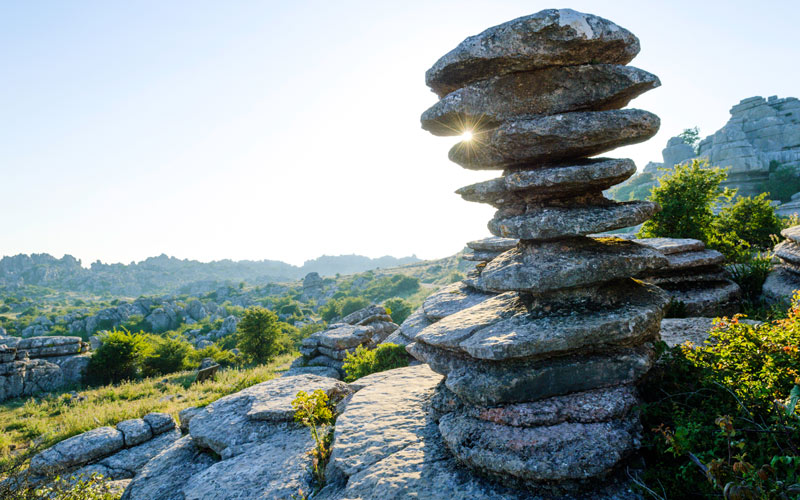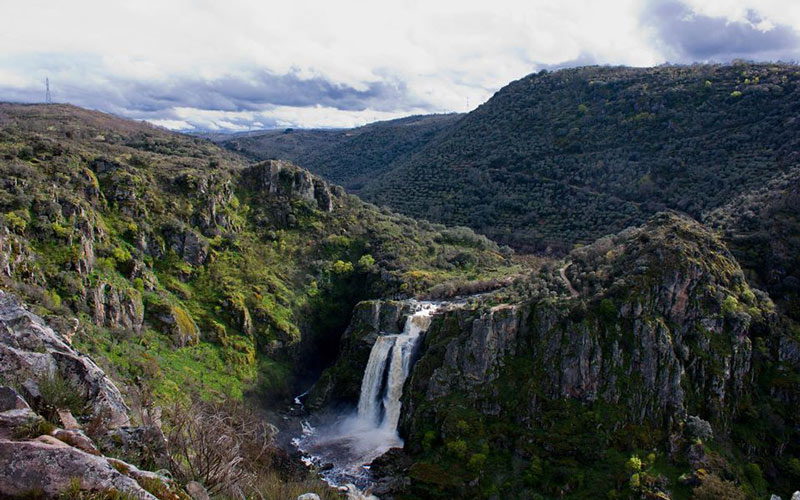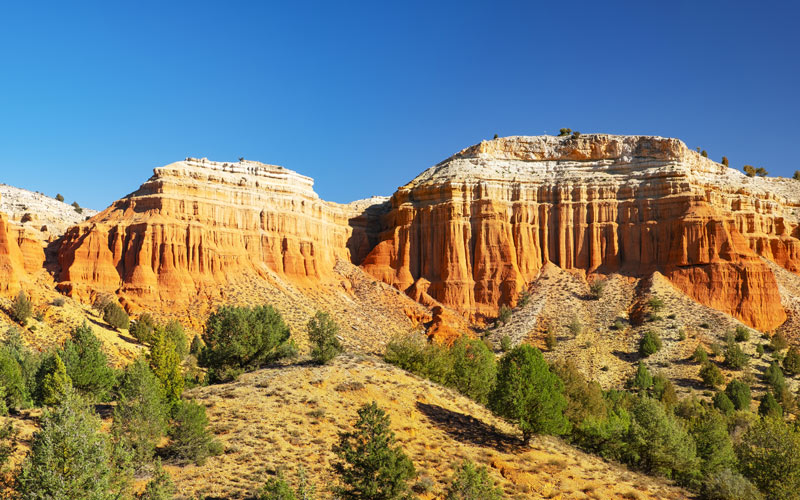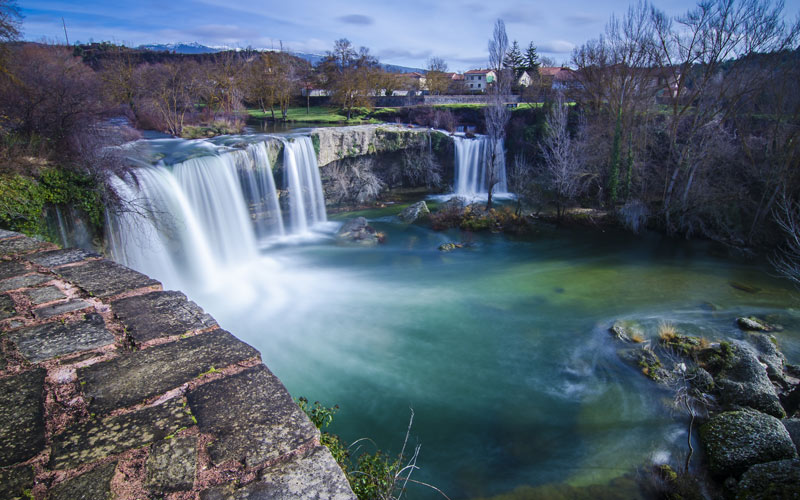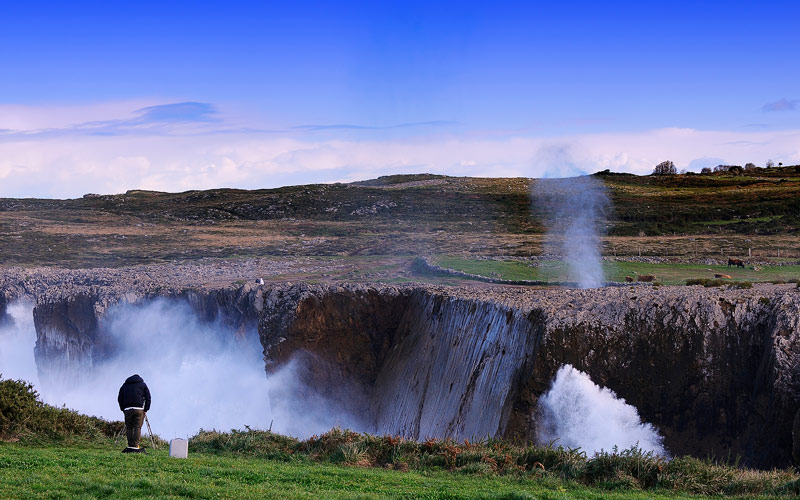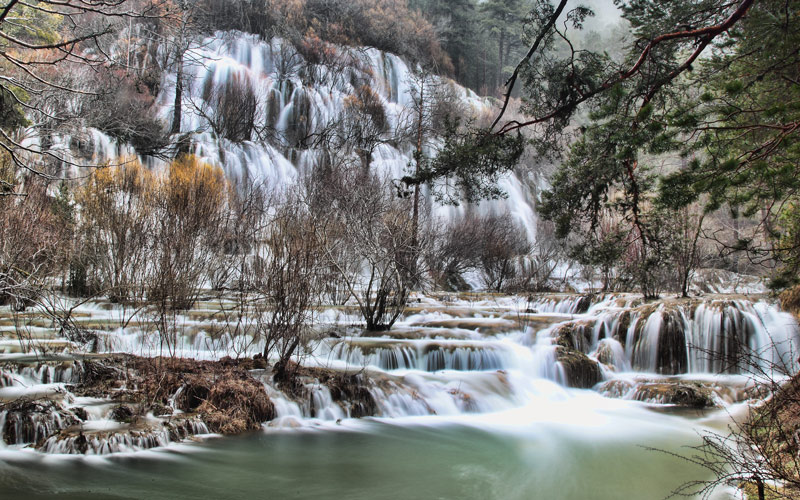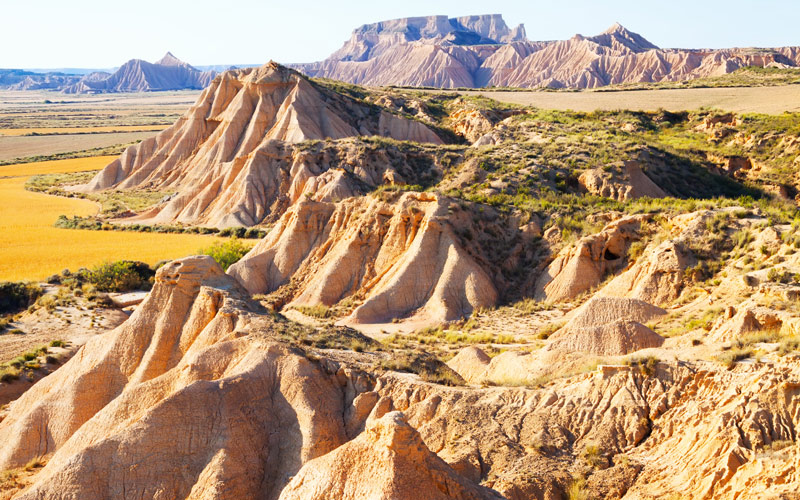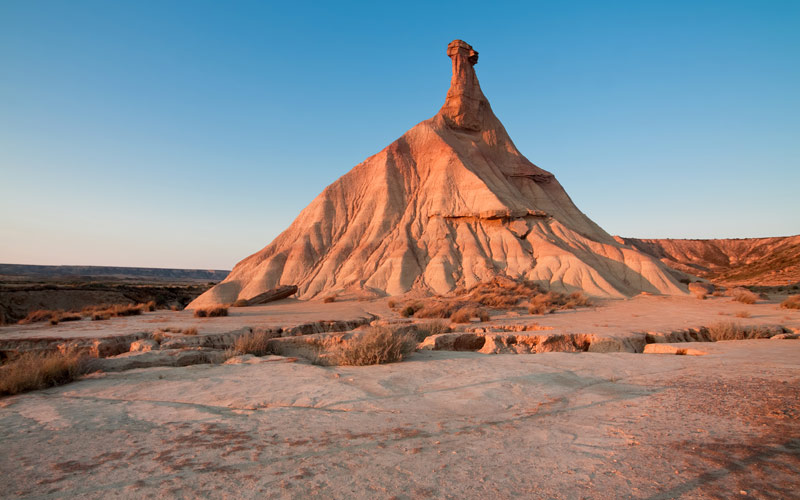There are thousands of spectacular natural landscapes in Spain, many of them located in natural parks. However, there are many natural areas that are unknown to many people but which, although they receive a large number of visitors, have not yet become so popular. These unknown natural areas will amaze anyone with their beauty and magnificence.
Torcal de Antequera, Málaga
The Torcal de Antequera natural area is characterised by the shapes erosive agents have given to the limestone rocks there. It is one of the most striking karstic landscapes in Europe; located in a natural area of more than 1000 hectares. This natural space is unknown to many and is located in the towns of Villanueva de la Concepción and Antequera, province of Málaga.
The complex is made up of Torcal de Antequera natural park, Peña de los Enamorados and Dólmenes de Antequera archaeological site. In July 2016 the complex was declared a World Heritage Site by UNESCO.
Within the natural area, visitors can take two routes thanks to which they can discover natural sculptures such as the Sombrerillo, the Cáliz or the Tornillo, latter declared a National Monument. On the other hand, as in other limestone massifs, a large number of caves and chasms converge in El Torcal de Antequera. The chasms are vertical and have a maximum depth of 225 metres.
Pozo de los Humos, Salamanca
In the province of Salamanca there are many natural wonders, one of them is the waterfall of Pozo de los Humos, in the course of the river Uces, passing through the municipalities of Masueco (left bank) and Pereña de la Ribera (right bank). This waterfall has a free fall of 50 metres, so it is not surprising that it is one of the most visited places in the Arribes del Duero Natural Park. However, there are still many who have not visited this natural area.
From such height, the water falls creating a cloud of steam that ascends through the contour of the park creating an unparalleled landscape. The Spanish writer Miguel de Unamuno wrote down his astonishment when he saw the waterfall from Masueco. And this is not all, a few meters from the Pozo de los Humos the stream splits creating another waterfall called the Pozo de las Vacas.
Rambla de Barrachina, Teruel
La Rambla de Barrachina in the province of Teruel is known as “The Grand Canyon of Teruel“. As if it were a scene from a movie from the far west, the Rambla de Barrachina is located near Teruel, in the Aragonese region. A hidden landscape that can be crossed through paths facilitated by the enclosure. Depending on the time of day, the sun shines on the clays of the ravine and they change colour, with lighter and darker shades.
Los Órganos is a natural protected area located in the north of the municipality of Vallehermoso, in La Gomera, one of the eight Canary Islands. This basaltic formation in the middle of the cliffs extends from the sea to 700 meters of altitude. The “pipes” called “órganos” because of their similarity to those in churches are magma that, without coming to the surface, cooled down. The force of the sea sculpted the curious shape they have today. In order to see this natural space from the sea there are sea trips offered by private boats.
Pedrosa de la Tobalina Waterfall, Burgos
Pedrosa de la Tobalina waterfall is one of the natural wonders to be seen in the north of Burgos. Located in the region of Las Merindades, this spectacular waterfall is 12 metres high and 100 metres long. Its waters come from the river Jerea, a tributary of the river Ebro. Thus, located between the municipalities of La Orden and Pedroza de Tobalina; visiting the waterfall is an excellent plan, especially in summer, when you can swim in its waters. Accessing it is very easy, as it is very close to the road.
Bufones de Pría, Asturias
The natural phenomenon of the Bufones de Pría is a visual spectacle. It can be seen in the Asturian town of Llames de Pría. The erosion of the sea and the rain on the rock have caused chimneys and cracks to form; which connect the land with the sea. Normally, the blow of the waves against the cliffs causes the expulsion of compressed air from the galleries. However, when waves are stronger the water and air come out through jets of water with great pressure and height.
You can park your car at Llames de Pría and walk along the cliffs in front of it. When the tide is high, the natural phenomenon that can be seen there can amaze even the most indifferent.
Source of the Cuervo River, Cuenca
Did you know that the source of the Cuervo River has been declared a Natural Monument? With an area of more than 1700 hectares, at the source of the Cuervo River in Cuenca, the water flows from a unique spring and falls from large moss-covered rock stalactites. During the winter, these springs freeze and develop an already established pattern that is photographed thousands of times every year. Behind the waterfalls, different caves can be observed as well as chasms in the surroundings.
Located in the Serranía de Cuenca natural park, the source of the River Cuervo can be reached from the town of Tragacete. There you can see the unique flora living there thanks to the humid continental microclimate. As an example, the orchids that grow in the surroundings.
The natural park of the Bardenas Reales is one of the most unique that we have in Spain. The wild beauty that characterizes this park has led it to be declared a Biosphere Reserve. However, there are many who still do not know the secrets of this semi-desert landscape located in Navarre, near Tudela. With over 42,000 hectares, the erosion of its gypsum, clay and sandstone soils by water and wind has sculpted some of the most striking shapes. For example, plateaus with a tabular structure, ravines and headlands, surprisingly solitary hills such as the one known as Castildetierra.
The amazing shapes that are in this park, popularly called Bardenas, have been sculpted after millions of years of continuous erosion. It is currently divided into three areas: the Plano, a farmland with few elevations; the Bardena Blanca, where the popular formations of Pisquerra and Castildetierra are found; and the Bardena Negra, with the largest vegetation cover in the area, including forests of Aleppo pine. For those who love hiking and cycling, there are more than 700 km of mostly signposted paths.
Meandro del Melero, Salamanca
In Castile and Leon, specifically in Salamanca, is the Meandro del Melero, in which the river Alagón makes a turn that causes a postcard image. However, it is from the viewpoint of La Antigua where it is possible to contemplate this incredible natural spot. This viewpoint is located in the town of Riomalo de Abajo, in the province of Cáceres. Thus, the best place in which to contemplate this natural landscape of Salamanca is from this town of Cáceres. A balcony that offers the visitor a beautiful meander, with views of Las Batuecas-Sierra de Francia natural park.
From this location you can visit both the region of Las Hurdes in the northern Cáceres and the southern Salamanca; both sites with many landscapes that offer an unforgettable experience. Thus, in the south of Salamanca is La Alberca, one of the most beautiful villages in Spain. North of Cáceres is the abandoned village of Granadilla, with its magnificent Almohad wall.

